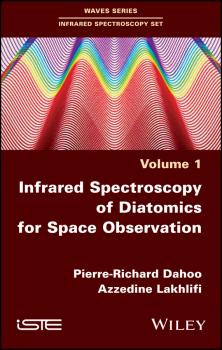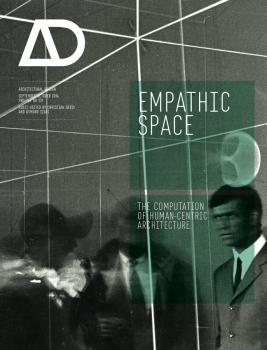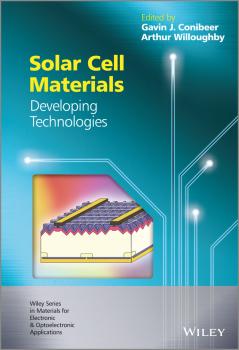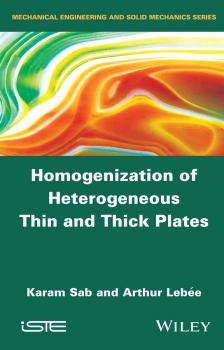ТОП просматриваемых книг сайта:
ЛИТМИР - LITMIR.BIZ - Электронная библиотека
Скачивание или чтение онлайн электронных книг.Аннотация
The fabrication of MEMS has been predominately achieved by etching the polysilicon material. However, new materials are in large demands that could overcome the hurdles in fabrication or manufacturing process. Although, an enormous amount of work being accomplished in the area, most of the information is treated as confidential or privileged. It is extremely hard to find the meaningful information for the new or related developments. This book is collection of chapters written by experts in MEMS and NEMS technology. Chapters are contributed on the development of new MEMS and NEMS materials as well as on the properties of these devices. Important properties such as residual stresses and buckling behavior in the devices are discussed as separate chapters. Various models have been included in the chapters that studies the mode and mechanism of failure of the MEMS and NEMS. This book is meant for the graduate students, research scholars and engineers who are involved in the research and developments of advanced MEMS and NEMS for a wide variety of applications. Critical information has been included for the readers that will help them in gaining precise control over dimensional stability, quality, reliability, productivity and maintenance in MEMS and NEMS. No such book is available in the market that addresses the developments and failures in these advanced devices.
Аннотация
This book describes different theoretical models developed to identify the near and mid infrared (IR) spectra of diatomic molecules isolated in the gas phase or subjected to environmental constraints, useful for the study of environmental sciences, planetology and astrophysics. The applications presented show how molecular interactions modify the near and mid IR spectra of isolated diatomics under the effect of pressure, a nano-cage (substitution site, Clathrate, Fullerene, Zeolite) or surfaces, to identify the characteristics of the perturbing environment.
Аннотация
Addressing a cutting-edge, multidisciplinary field, this book reviews nanomaterials and their biomedical applications. It covers regeneration, implants, adhesives, and biosensors and strategies for more efficient therapy, diagnosis, and drug delivery with the use of nanotechnology. • Addresses the increasing demand for nanomedicine in a cutting-edge, multidisciplinary field • Introduces concepts, strategies, and requirements of developing materials • Discusses hot topics in drug delivery, such as neural regeneration, cartilage regeneration, bone tissue regeneration, dental regeneration, biomedical imaging, tissue adhesives and biosensors • Includes a chapter about nanotoxicology to help readers further understand the biocompatability of nanomaterials
Аннотация
There has been a continual expansion in aquaculture, such that total production is fast approaching that of wild-caught fisheries. Yet the expansion is marred by continued problems of disease. New pathogens emerge, and others become associated with new conditions. Some of these pathogens become well established, and develop into major killers of aquatic species. Diagnosis and Control of Diseases of Fish and Shellfish focuses on the diagnosis and control of diseases of fish and shellfish, notably those affecting aquaculture. Divided into 12 chapters, the book discusses the range of bacterial, viral and parasitic pathogens, their trends, emerging problems, and the relative significance to aquaculture. Developments in diagnostics and disease management, including the widespread use of serological and molecular methods, are presented. Application/dose and mode of action of prebiotics, probiotics and medicinal plant products used to control disease are examined, as well as the management and hygiene precautions that can be taken to prevent/control the spread of disease. This book will be a valuable resource for researchers, students, diagnosticians, veterinarians, fish pathologists and microbiologists concerned with the management of diseases of fish and shellfish.
Аннотация
"Focusing on the specific ingredients that activate clinical change, this book is enhanced by current research, more ample scope, and an array of contributions in contemporary and relevant topic areas. It is full of inspiration, direction, and grounding. This is a stunning contribution to the field of child therapy." —Eliana Gil, PhD, Gil Institute for Trauma Recovery and Education A practical look at how play therapy can promote mental health wellness in children and adolescents Revised and expanded, The Therapeutic Powers of Play, Second Edition explores the powerful effects that play therapy has on different areas within a child or adolescent's life: communication, emotion regulation, relationship enhancement, and personal strengths. Editors Charles Schaefer and Athena Drewes—renowned experts in the field of play therapy—discuss the different interventions and components of treatment that can move clients to change. Leading play therapists contributed to this volume, supplying a wide repertoire of practical techniques and applications in each chapter for use in clinical practice, including: Direct teaching Indirect teaching Self-expression Relationship enhancement Attachment formation Catharsis Stress inoculation Creative problem solving Self-esteem Filled with clinical case vignettes from various theoretical viewpoints, the second edition is an invaluable resource for play and child therapists of all levels of experience and theoretical orientations.
Аннотация
Automatic Modulation Classification (AMC) has been a key technology in many military, security, and civilian telecommunication applications for decades. In military and security applications, modulation often serves as another level of encryption; in modern civilian applications, multiple modulation types can be employed by a signal transmitter to control the data rate and link reliability. This book offers comprehensive documentation of AMC models, algorithms and implementations for successful modulation recognition. It provides an invaluable theoretical and numerical comparison of AMC algorithms, as well as guidance on state-of-the-art classification designs with specific military and civilian applications in mind. Key Features: Provides an important collection of AMC algorithms in five major categories, from likelihood-based classifiers and distribution-test-based classifiers to feature-based classifiers, machine learning assisted classifiers and blind modulation classifiers Lists detailed implementation for each algorithm based on a unified theoretical background and a comprehensive theoretical and numerical performance comparison Gives clear guidance for the design of specific automatic modulation classifiers for different practical applications in both civilian and military communication systems Includes a MATLAB toolbox on a companion website offering the implementation of a selection of methods discussed in the book
Аннотация
In recent years, questions of space have gained renewed momentum in architecture and urban design, as adaptation, densification and sustainable regeneration have become an increasing priority. While most computing-based design tends to emphasise the formal aspects of architecture, overlooking space and its users, the ‘original’ computational design approaches first spearheaded in the UK in the 1960s and 1970s tended to be focused on behavioural and occupational patterns. Over the last decade, a new generation of design research has emerged that has started to implement and validate previous investigations into spatial computation, aiming to understand how to design spatial configurations based on user experiences. This revives an interest in the experiential that was first explored in the early 20th century by German and Nordic organic architects, who invented design methods that correlated cognitive responses of buildings' occupants to spatial structure. The current revival of human-centric design, however, represents the first design approach that synthesises spatial design and algorithmic techniques with organic design thinking, which could also be regarded as a return to the ‘first principles' of architectural design. Contributors include: Paul Coates, Christian Derix, Olafur Eliasson, Lucy Helme, Bill Hillier, Åsmund Izaki, Prarthana Jagannath, Dan Montello, Juhani Pallasmaa, Philip Steadman and Guy Theraulaz. Featured Architects/Designers: Jussi Ängeslevä (Art+Com), Stan Allen, Aedas|R&D, Markus Braach (Kaisersrot), Hermann Hertzberger, Kazuhiro Kojima (Cat), Pablo Miranda and Rafi Segal.
Аннотация
Comprehensive and timely, Edible and Medicinal Mushrooms: Technology and Applications provides the most up to date information on the various edible mushrooms on the market. Compiling knowledge on their production, application and nutritional effects, chapters are dedicated to the cultivation of major species such as Agaricus bisporus, Pleurotus ostreatus, Agaricus subrufescens, Lentinula edodes, Ganoderma lucidum and others. With contributions from top researchers from around the world, topics covered include: Biodiversity and biotechnological applications Cultivation technologies Control of pests and diseases Current market overview Bioactive mechanisms of mushrooms Medicinal and nutritional properties Extensively illustrated with over 200 images, this is the perfect resource for researchers and professionals in the mushroom industry, food scientists and nutritionists, as well as academics and students of biology, agronomy, nutrition and medicine.
Аннотация
This book presents a comparison of solar cell materials, including both new materials based on organics, nanostructures and novel inorganics and developments in more traditional photovoltaic materials. It surveys the materials and materials trends in the field including third generation solar cells (multiple energy level cells, thermal approaches and the modification of the solar spectrum) with an eye firmly on low costs, energy efficiency and the use of abundant non-toxic materials.
Аннотация
This book gives new insight on plate models in the linear elasticity framework tacking into account heterogeneities and thickness effects. It is targeted to graduate students how want to discover plate models but deals also with latest developments on higher order models. Plates models are both an ancient matter and a still active field of research. First attempts date back to the beginning of the 19th century with Sophie Germain. Very efficient models have been suggested for homogeneous and isotropic plates by Love (1888) for thin plates and Reissner (1945) for thick plates. However, the extension of such models to more general situations –such as laminated plates with highly anisotropic layers– and periodic plates –such as honeycomb sandwich panels– raised a number of difficulties. An extremely wide literature is accessible on these questions, from very simplistic approaches, which are very limited, to extremely elaborated mathematical theories, which might refrain the beginner. Starting from continuum mechanics concepts, this book introduces plate models of progressive complexity and tackles rigorously the influence of the thickness of the plate and of the heterogeneity. It provides also latest research results. The major part of the book deals with a new theory which is the extension to general situations of the well established Reissner-Mindlin theory. These results are completely new and give a new insight to some aspects of plate theories which were controversial till recently.










